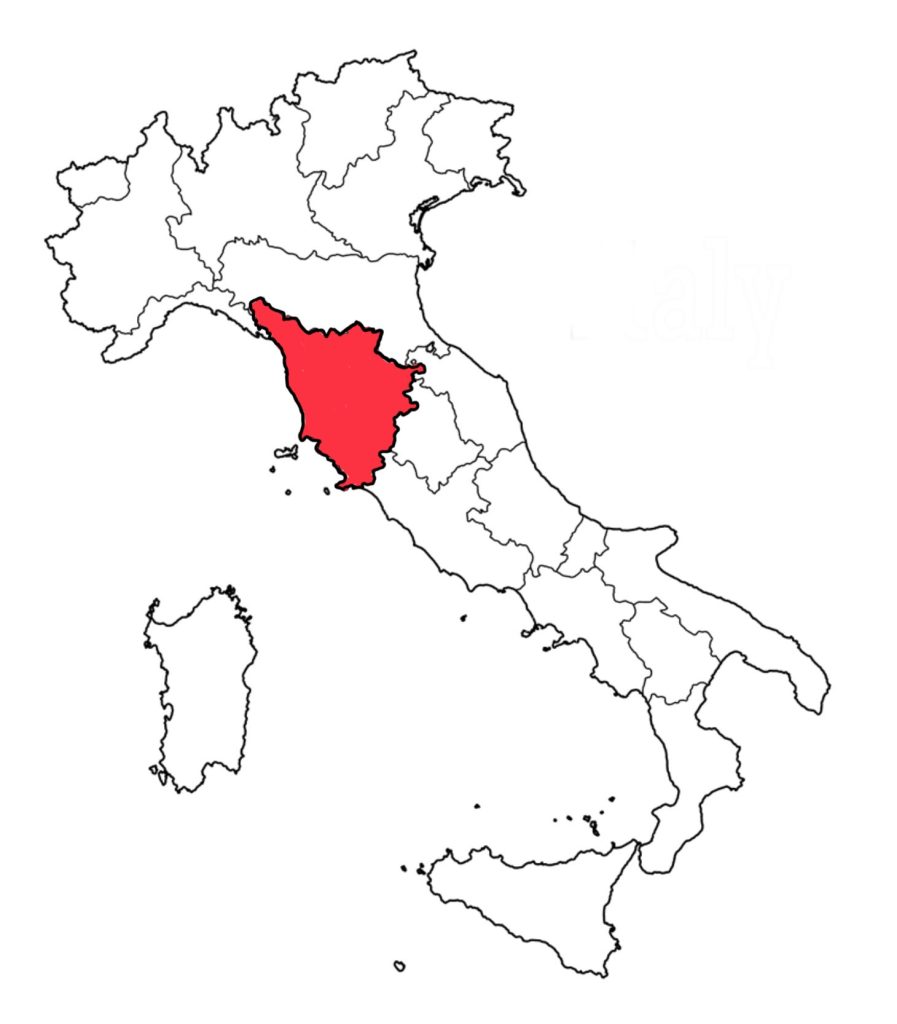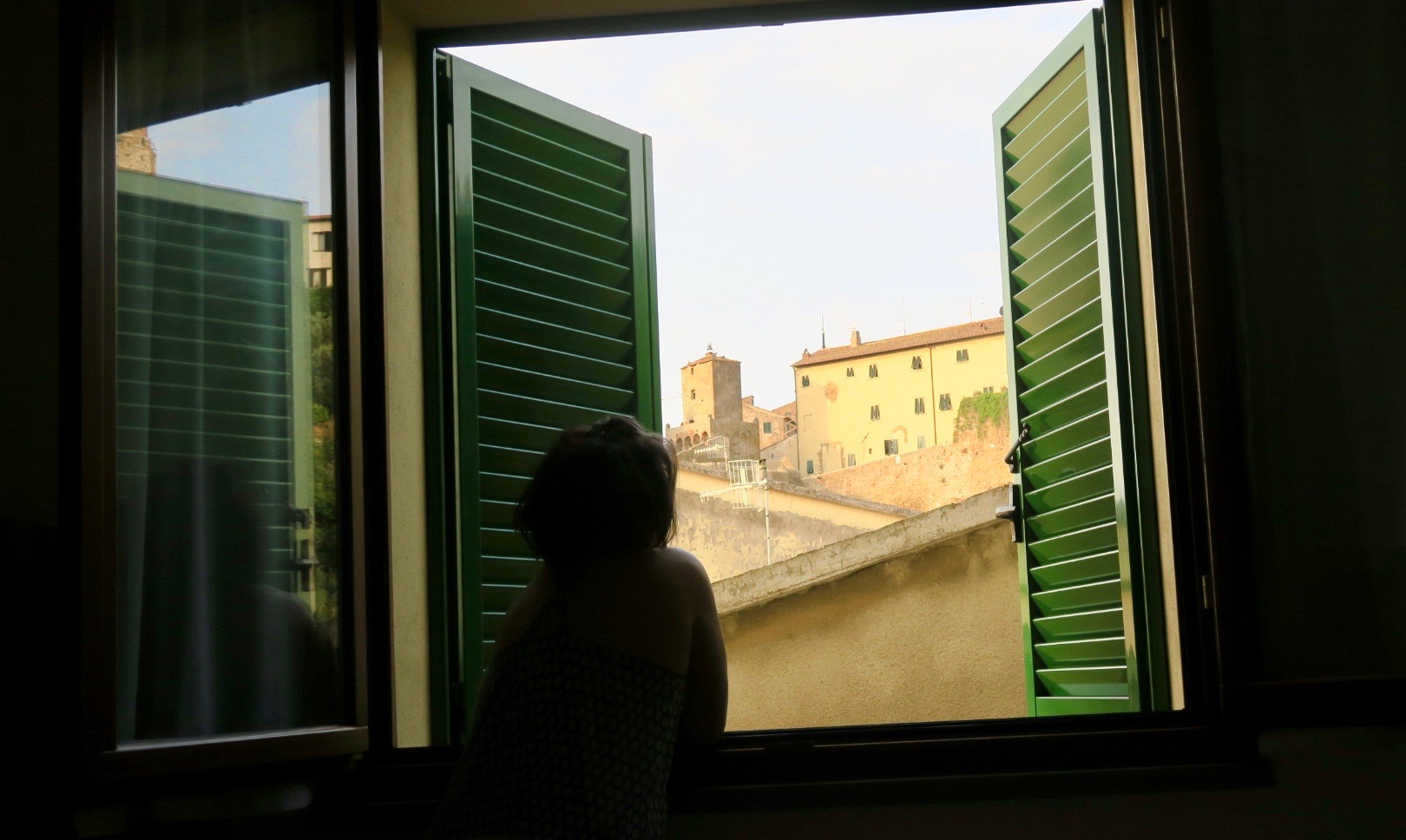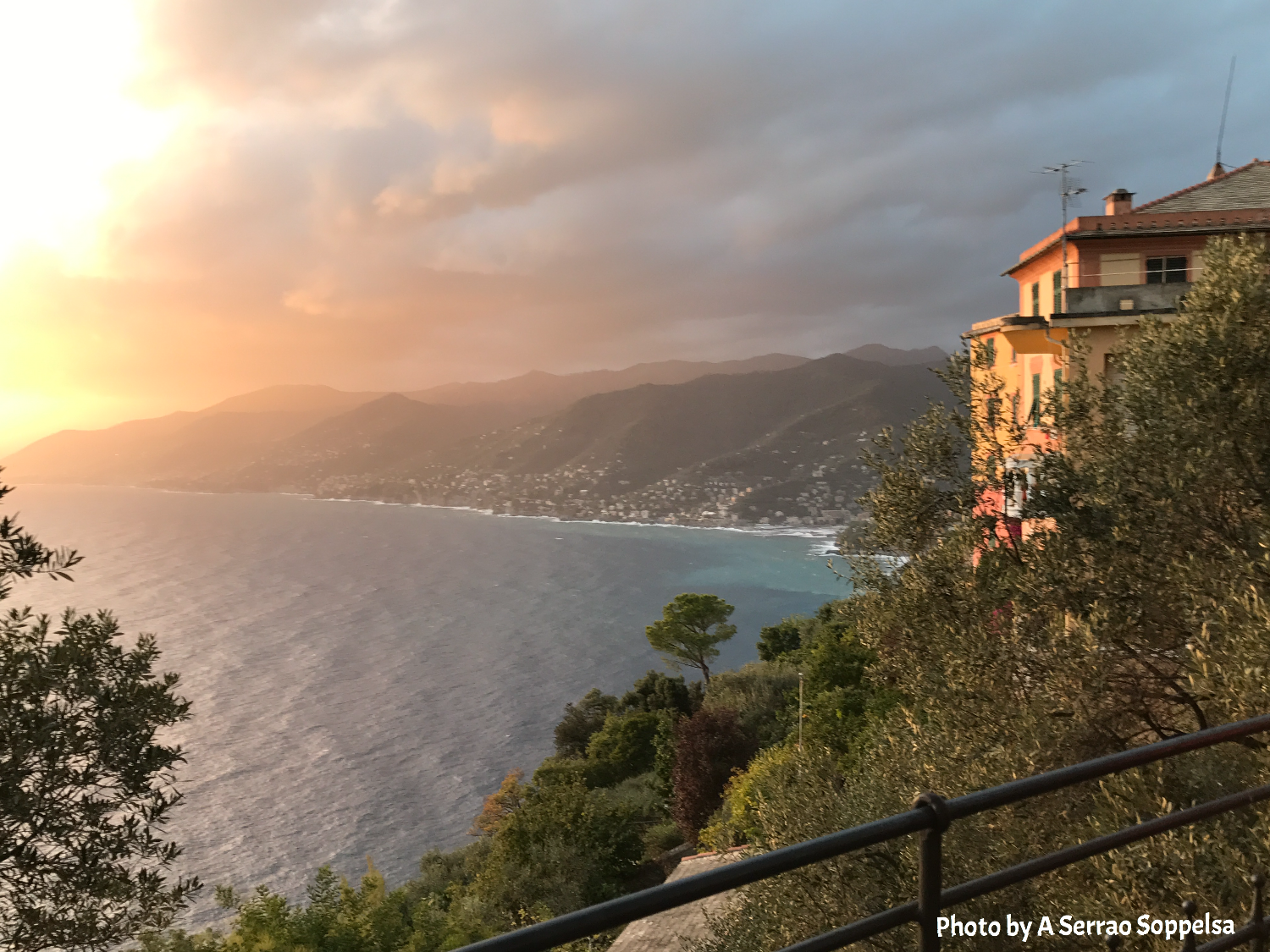The footbridge is an arduous perpendicular climb. It feels never ending. But then approaching the halfway point you look up and there, seemingly suspended above the clouds, lies a fairytale village perched on a tufaceous stone cleft at 443 meters above sea level. It sits regally on a rocky crest overlooking verdant valleys and rocky ravines that embrace the cliff from which slowly and forcefully emerges this crest, pushing upward and outward struggling against the gravity that threatens to suck it back down into the abyss. Beyond, in the distance, is visible the ridge of the blue tinged mountains of Umbria.

La fiaba del paese che muore – del paese che sta attaccato alla vita in
mezzo a un coro lunare di calanchi silenziosi e splendenti, e ha dietro le spalle
la catena dei monti azzurri dell’Umbria …” da Bonaventura Tecchi, Antica Terra
It is a landscape that, once the eye falls upon it, rocks the senses.
My breathing is laboured, partly from the climb, but mostly from the sensations that assault the mind: here surely is the ascent described by Dante as he approaches Paradise:
Io ritornai da la santissima onda rifatto sì come piante novelle rinnovellate di novella fronda, puro e disposto a salire alle stelle.
Dante, Divina Comedia, Canto XXXlll,Purgatorio

What lies before me as I approach is poetry. A huge Gothic archway bids entrance into a past of mediaeval dwellings, Renaissance villas and a small, unpaved piazza; everything about ,Civita di Bagnoregio reminds me of those magical paper fairytale towns that unfold and come to life when the book is opened. Its fragility seems to cast a spell. Everyone enters and looks about in silence, rendered speechless by both the delight and the frightening dereliction of this town.


We’ve arrived with a light drizzle and clouds overhead. The car gets left behind in a car park and the few euros we pay at the base allow us up the footbridge to the top. The summer warmth has given way to autumn scents and a slight chill. I find myself looking up at the remains of a large building whose façade is all that remains. Everything else has slowly and systematically slid off the side of the ridge. The openings that were once windows allow for a splendid view of the sky beyond. It’s a stage set that once housed real people.


The silence is broken by the voice behind us of an elderly person. An elegant, well coiffed woman is thanking the young couple that lent her their arm in the walk up the footbridge. I eavesdrop on their conversation, curious to know why someone her age would have undertaken such a climb. She lives in Rome she tells her good Samaritans but this is her home. She comes back every weekend after a 2 hour ride from the city and this grueling climb, just to be here, in the town she loves. “Non durerà ancora per molto” (it will not be around for much longer) she tells her young friends, “questo paese sta morendo” (this town is dying).
Civita di Bagnoregio is on the verge of extinction. The land that surrounds it will eventually reclaim it. This ancient village is in fact condemned. A few more years, maybe ten, maybe twenty, and then the end is certain. The mere fact that it still stands,– perched as it is on the very porous volcanic rock known as tufa, surrounded on all sides by only air,
— that it still resists, disrupted by earthquakes, corroded by waters, slowly eroding… is more miracle than truth, more legend than reality. (Bonaventura Tecchi)
“è più miracolo che cosa vera, più leggenda che realtà.”
(Bonaventura Tecchi)

This ancient town dates back to Roman times when its position on a thriving trade route brought to the town and its people prosperity and growth, right up to the Middle Ages. Then, following a devastating earthquake in 1695, everything started to go downhill, so to speak. Homes sitting on the town’s outer periphery began plummeting down the sides succumbing to the slowly eroding rock. The ravages of time then started taking their toll, and by the 20th century, the combined effects of natural disasters, urbanization, poverty and consequently the great waves of migration left Civita di Bagnoregio, like many other small rural towns of Italy, virtually empty and destitute. 1.Deborah Needleman. (2017, September). Who will Save This Town. The New York Times Style Magazine pp 123-126.
There are about 10 full time residents that live in Bagnoregio now. And then there are the curious, the wanderers, and the explorers that come to visit. Occasionally, a selfie stick can be seen rearing its ugly head. But there is nothing here that might entice a visitor to stay: there are no large hotels, only a few inns; no hospital, no pharmacy, no schools. The town is dotted here and there by a restaurant or bar. The rest just tells a story of another time, and the silence permeates everything, —the streets, the corners, the panorama below that surrounds the town. In the silence I close my eyes for just a moment and hear the hustle and bustle of a mediaeval town on market day. Merchants are hawking their wares, barking out their prices; children are screaming with delight; horses tethered to iron rings whinny and try to break free. It’s just a momentary escape, caught up as I am in the magic of my surroundings.


We arrive at the main square which is unpaved and has only gravel mixed with soil, –a sight that brings us back four hundred years. A handsome seventh century mediaeval tower flanks the San Donato Church. Inside the church, a floral carpet has been carefully lain down the centre aisle, probably in accordance with some local festivity. But the piazza here, is the main attraction. At Christmas time, we’re told, a living presepio, or Nativity scene is re-enacted, and throughout the year other festivals and processions take place to honour the town’s past.
I think about this and wonder if the 10 residents that live here year round are the only ones that take part in these traditional festivities? Certainly there are enough of them to depict the living crèche scene, but what about the processions and gatherings celebrating other holiday occurrences? I suppose that reinforcements come in from former community members, relatives, tourists. Who knows.


There are many other towns all over Italy like Civita di Bagnoregio; beautiful towns and villages that now sit empty, the countryside around them, dormant. These rural communities were once made up of craftsmen, artisans, farmers, and merchants whose existence was closely connected to the land and to age old traditions. With the gradual loss of these populations so too vanish the skills and customs associated with each town; with the extinction of towns like Bagnoregio Italy virtually loses its “rural soul”. 2.Deborah Needleman. (2017, September). Who will Save This Town. The New York Times Style Magazine pp 123-126.
I shake myself out of my musings and join my friends for a walk through the town. We reach small courtyards and squares, admire Etruscan ruins and enjoy the freedom of walking in streets without cars. Soon we arrive at the outer limits of the town and stop for a picture. Here, behind the streets and alleys, at the edge of town the land drops down deeply ridged gulleys and ravines known as calanchi. Beyond, the land dilates and meets the ridge of Umbrian mountains at the horizon. Silence echoes throughout this valley and envelopes the crest this town sits upon. We stand mesmerrized by such magnificence.


We make our way back slowly to where we entered the town and where the footbridge will return us to reality. I look back one more time, reluctant to draw my eyes away from this unique gem that is Civita di Bagnoregio, afraid that next time I look, it will be gone.



above photo courtesy of ermess




